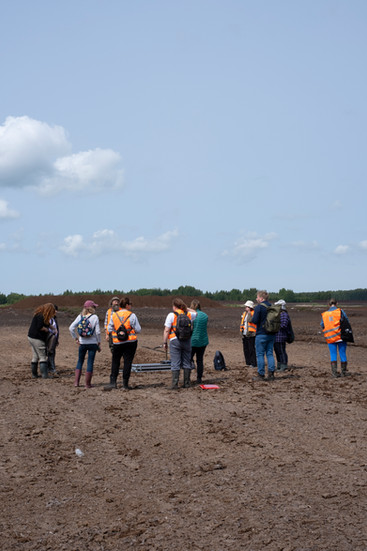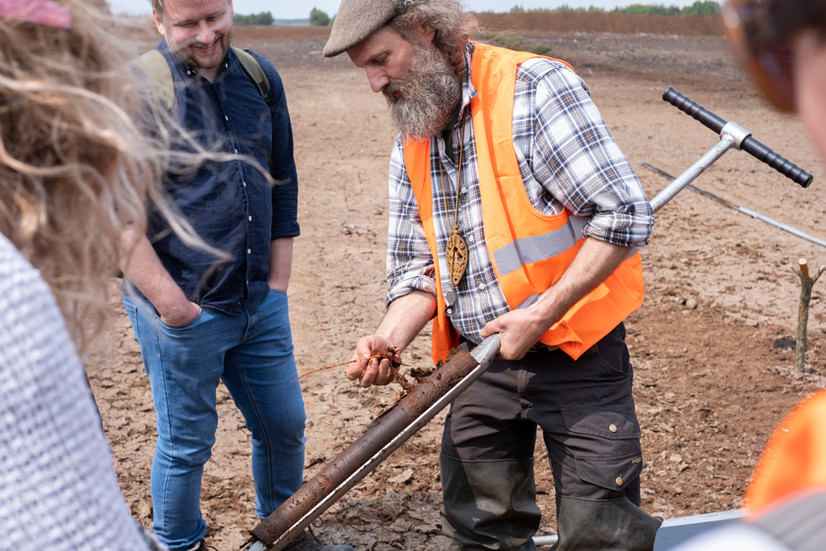Deep Histories and Wet Wonders of Aukštumala: What plants, waters and peat tell us about the present and the past - peatlands have layers in space and time.
Current Project

Collaborator/s:
WETBEINGS Aukštumala ~ Arts, Science & Story Field Symposium
Excursions
31 May 2025
Aukštumala Raised Bog: Protected Areas
1 June 2025
Aukštumala Raised Bog: Birch forest and archeological site in the extraction fields
with:
Andreas Haberl & Jūratė Sendžikaitė with Aukštumala Raised Bog, European Pond Turtle and Sundew.
Water, mire plants, and peat are closely related and depend on each other in living peatland ecosystems. In intact peatlands (mires) plants growing there get under water saturated conditions after they die. Due to lack of oxygen microbes cannot decompose the dead plant material completely and over time layers of dead organic material accumulate on the site. We call that material peat and the place where it is accumulated, a peatland. Over the last 10,000 years peatlands in Europe have formed peat deposits of several meters depths - an archive to interpret the history of the peatland and its environment. Exploring vegetation and species of the present can give us valuable information on the status and the current hydrology of the site and by corring into the depth we can learn about the development of Aukštumala after the last Ice Age. In peatland- and Paleo-ecology we name a peat deposit a chronostratified archive the deeper the layer in a peat profile the older the material is. With a chamber-corer not only the third dimension of a peatland "its depths" but also the fourth dimension "its existence in time" can be experienced. How the peatland and environmental changes interacted can be interpreted from the peat deposits a time travel to the beginning before the mire came into existence to form a peatland is possible.
Participants of the workshop were not only introduced to the special vegetation and biodiversity in present nature near parts in the protected part of Aukštumala, but could experience the development and formation Aukštumala peat bog during the last 9000 years by having hands and eyes on the peatstratigraphy both from the nature near site and from the active peat quarry in the Northeast of Aukštumala.
Complemented by the archaeological workshop, a very broad time frame stretching back to 11,000 years ago was established, allowing the landscape to be explored in all its diversity and susceptibility to human influence from the time before the existence of Aukštumala till today. Participants ccould travel through time to the the terestrialisation of a former lagoon or lake indicating the beginning of a fen phase and the emergence of the raised bog complex, to colonisation and land reclamation in the 19th century and the destruction caused by peat extraction in the recent past.
Jūratė Sendžikaitė (botanist, peatland restoration expert, Foundation for Peatland Restoration and Conservation, Vilnius) with Saulašarė - Sundew and
Andreas Haberl (paleo- and peatland ecologist and paludiculture expert, Michael Succow Foundation, Greifswald) with Balinis vėžlys - European Pond Turtle.


























